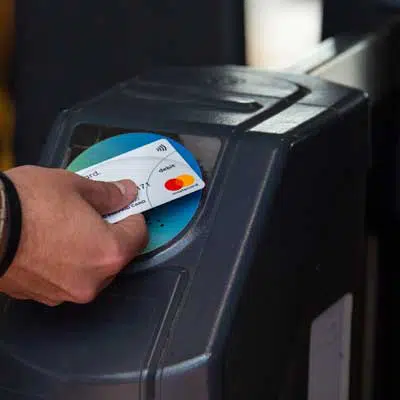Is 2019 turning into the year of contactless payment for mass transit? Miami-Dade County announced Wednesday it has started accepting contactless cards and mobile wallets at gates at 23 commuter train stations, with plans to include bus fares later this summer. The move follows New York City’s adoption in May of contactless fare payment.
In all, some 20 U.S. cities have contactless systems for commuter fare payment either operating or in the works, according to Mastercard Inc., including Boston, Chicago, Denver, and Los Angeles. In the case of Miami’s new system, as with most others, the technology provider is Cubic Corp.’s transportation-systems unit. The San Diego company’s technology allows commuters to tap and pay with major-brand credit cards or with mobile wallets including Apple Pay, Fitbit Pay, Google Pay, and Samsung Pay.

“We strive to make it easier to use transit … Tapping to pay with a contactless-enabled bank card or digital wallet meets the high consumer expectations in today’s age of convenience,” said Alice N. Bravo, P.E., director of the Miami-Dade Department of Transportation and Public Works, in a statement. Miami-Dade County awarded a contract to Cubic in 2016 to modernize its Easy Card fare system.
The importance of mass transit’s move to contactless payments is that by definition it introduces millions of consumers to the technology and lets them use it multiple times a day. Miami’s Metrorail system, for example, moves as many as 3 million commuters each week. Payments companies hope this habituation will then lead to increased use of contactless cards and mobile wallets at other venues.
“Transit is an important catalyst for quick and broad adoption of contactless,” Linda Kirkpatrick, Mastercard’s executive vice president for U.S. merchants and acceptance, said in a statement earlier this year. “There are technologies that need to be integrated both at the device-level and infrastructure level.”
Transit authorities, meanwhile, hope the technology will smooth and speed commuter throughput at stations and machines that for years have taken slower-moving media such as cash.





